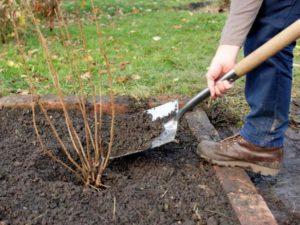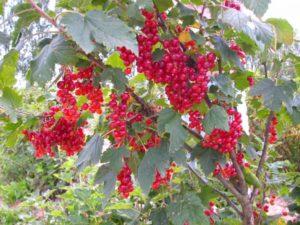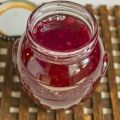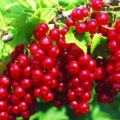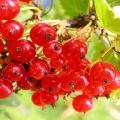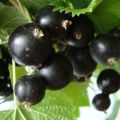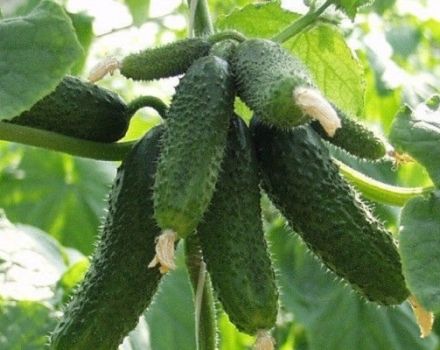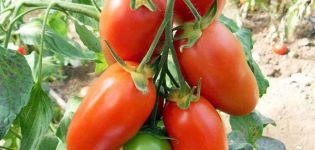Planting, growing and caring for red currants in the open field
Currant bushes, like other plantations, require favorable environmental conditions for abundant fruiting. When planting red currants, it is necessary to choose a suitable place, observe the growing time and provide comprehensive care in the future.
Content
- 1 How does red currant grow and what year does it bear fruit after planting
- 2 Optimal growing conditions
- 3 Outdoor planting
- 4 Terms of planting works
- 5 What kind of soil does he like
- 6 Preparation of seedlings
- 7 Landing scheme
- 8 Where to plant red currants on the site: in the shade or in the sun?
- 9 Caring for a red-fruited culture
- 10 Preventive treatments for diseases and insects
- 11 Wintering bushes
- 12 How to plant red currants
How does red currant grow and what year does it bear fruit after planting
The bushes begin to grow actively towards the middle of spring. Under optimal growing conditions, growth can begin in late March. The greatest number of fruits is borne by shoots growing from 2 to 5 years.
On the skeletal branches, fruit branches with flower buds are formed. Usually fruit branches are located at the top of the skeletal branch. Such an arrangement of fruit branches forms a layering of fruiting, due to which most of the berries ripen in the area between old shoots and new shoots.
Red currants begin to bear fruit later than black currants and bears fruit in the second year after planting. The yield indicator increases every year, and with proper care, full fruiting occurs after 3-4 years. In order to increase yields, it is recommended to periodically plant new varieties, form plants and adhere to the rules of agricultural technology.
Optimal growing conditions
For active development and fruiting, shrubs require a warm climate, constant natural light and fertile land. The yield and taste characteristics of berries directly depend on the created environmental conditions.
Outdoor planting
In most cases, currants are grown in open field conditions. When planting, it is necessary to determine in advance the timing, choose a site, properly prepare the seedlings and plant according to one of the optimal schemes.
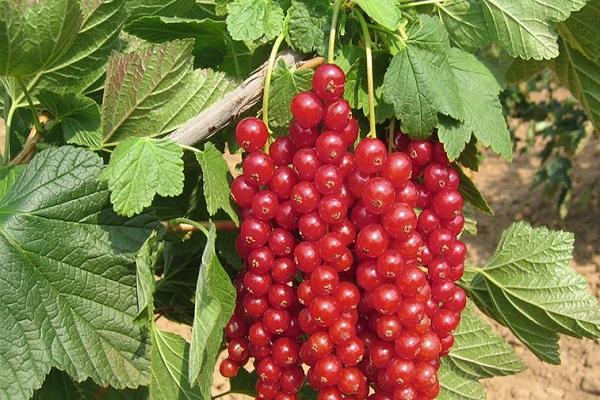
Terms of planting works
You can plant currants in different seasons. Planting dates depend on the region where the currants grow, the specifics of the climate, weather conditions, the selected variety, type of soil and a number of other third-party factors.
In autumn
The optimal period for planting currant bushes is the last days of September for the middle zone of the country and the first weeks of October for the southern area. In the case of a later planting, young seedlings will not have time to adapt to new conditions, which will lead to a decrease in productivity or their death. For successful wintering, plants need to root tightly in the soil.
In the spring
If it is not possible to plant red currant bushes in the fall, it is allowed to transfer the seedlings to the ground with the onset of spring warming. It is better to plant the bushes in April to exclude the possibility of recurrent frosts. It is important to take into account that the bushes planted in spring will lag behind those transferred to the ground in autumn.
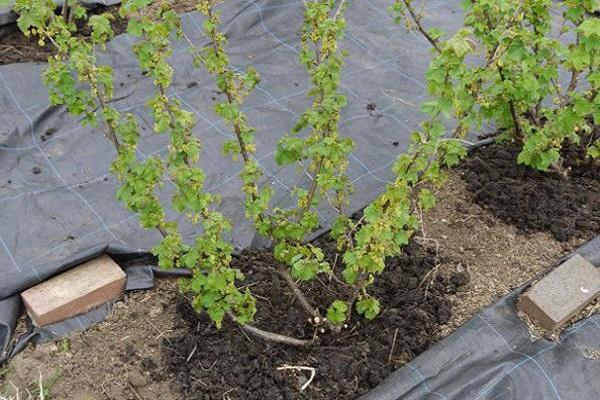
What kind of soil does he like
Loose sandy loam or light loamy soils are well suited for planting any variety of red currants. The acidity index of the soil should be neutral or weak.
Preparation of seedlings
Currant yield largely depends on the quality and proper preparation of the planting material. Saplings with a well-formed root system grow and bear fruit best. For the active development of bushes, 3-5 skeletal roots up to 20 cm long and a pair of ground shoots 35-40 cm long are enough.
To prevent the thin roots from drying out before transplanting the plants, they should be wrapped in a soft cloth and covered with polyethylene. Before replanting plants in the ground, it is necessary to prune the base of the roots and dip them in a solution of clay with a mullein and water.

Landing scheme
For stable fruiting, it is important to properly plant red currant bushes, following the basic scheme. You can plant bushes along fences or in an open area in a free order. The gap from bushes to fruit trees must exceed 2.5 m.
When planting in several rows, the row spacing is 1.5-2 m.Depending on the degree of leafiness and spreading of the crowns of shrubs, they are placed at a distance of 1-1.2 m.
Where to plant red currants on the site: in the shade or in the sun?
Plants are recommended to be planted in an open area, which is well lit by the sun throughout the day. Lack of light leads to a reduction in the quantity and quality of the crop. In the case of growing in greenhouse conditions, you should remove the shelter during the day or compensate for the lack of natural light by artificial means.
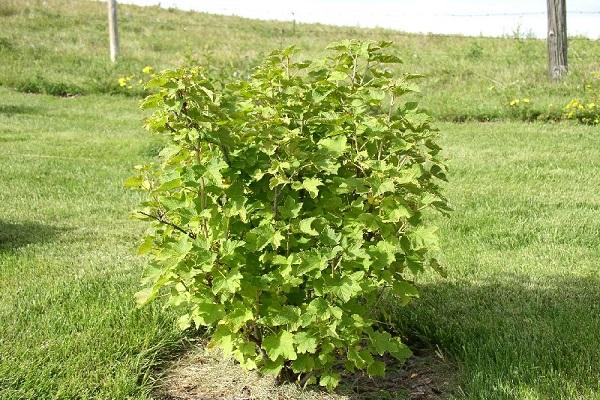
Caring for a red-fruited culture
Having completed the planting of berry bushes, you should familiarize yourself with how to care for red currants in order to get a large harvest. For development and intensive fruiting, it is sufficient to adhere to standard care rules, including the following:
- application of fertilizers and growth stimulants;
- regular watering;
- formation;
- protection against diseases and pests;
- shelter for the winter;
- timely transplantation and reproduction.
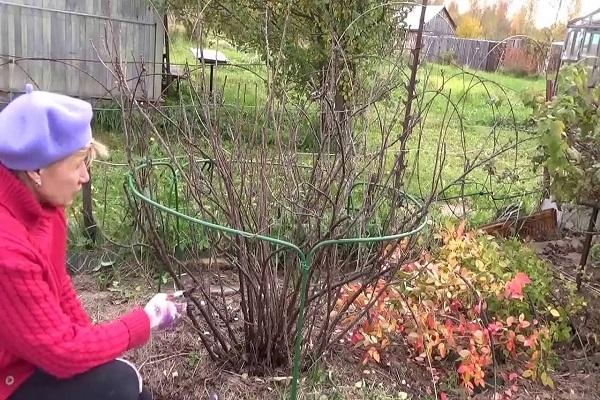
Top dressing
The use of fertilizers is one of the main conditions for the active development of bushes. During the growing season, plants quickly consume nutrients from the soil, so the reserves of nutrients must be periodically replenished. For this purpose, mineral and organic dressings are used several times throughout the year. In particular:
- In the spring, after the snow cover melts, the soil is treated with a mixture of compost, potassium sulfate and superphosphate. Fertilizers with a high nitrogen content are also suitable for spring treatment.
- Before flowering, the soil is fertilized with urea or ammonium nitrate in a ratio of 15 g and 25 g per square, respectively. After flowering, the currants are fertilized with a liquid mullein or a solution of bird droppings.
- In the fall, 100-120 g of superphosphate and 35-40 g of potassium chloride are introduced under each bush. After processing the soil, a layer of mulch from a mixture of rotted manure and peat is placed on top of the trunk circle.
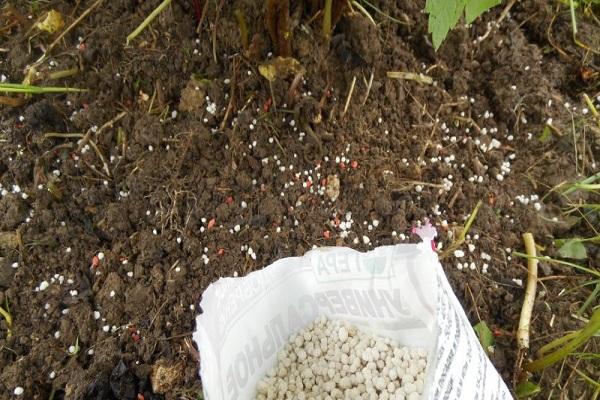
Watering
Red currant is a moderately moisture-loving plantation. Most of all, the need for regular watering occurs in the summer, in hot weather.Also, constant hydration is required after flowering, when the first berries begin to ripen.
It is recommended to water the plants in the early morning or after sunset, so that the bulk of the water has time to penetrate to the roots. To keep the ground in the area of the near-trunk circle moistened longer, you can resort to mulching as an additional measure. When using mulch, there is no need to loosen and weed the soil.
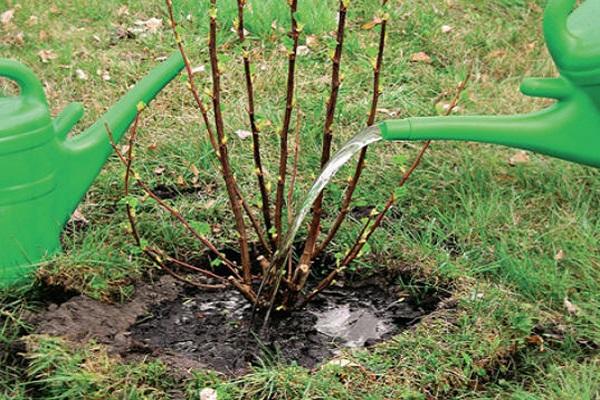
Pruning
In red currants, fruit buds grow on the bases of young shoots and small cuttings on old branches. Due to the peculiarities of bud formation, the crop grows in equal proportions on both young and old branches. In comparison with black currant, the formation of red is performed less often.
The optimal number of branches of different ages on one plant is 15-20. To do this, it is necessary to leave 2-4 young shoots growing in different directions annually after planting seeds or a formed seedling. All other stepchildren are cut off.
The fruiting period of shoots reaches 6-8 years, after which they must be removed.
In the process of crown formation, it is also required to defeat damaged, drying out and low-yielding branches. Old branches can be identified visually - they always have a darker shade. Pruning is carried out in late autumn or early spring. In summer, it is enough just to pinch the bases of young shoots.
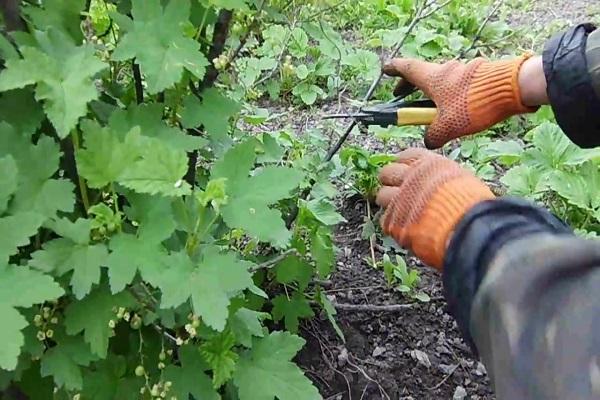
Formation of bushes on a trellis
The use of a trellis at the summer cottage increases productivity, promotes the enlargement of berries, ensures friendly ripening, and simplifies pest control. You can make a trellis near the boundaries of the site, avoiding places where the shadow falls. The structure can be made from different materials by placing 3 rows of wire at a height of 50, 100, 150 cm.
The bushes are planted under a trellis, deepening 10 cm more than usual. In the second year after planting, powerful shoots are left and tied to a wire. With further growth, the skeletal branches are moderately pruned, preventing strong growth. Over time, old branches are removed and replaced with new shoots.
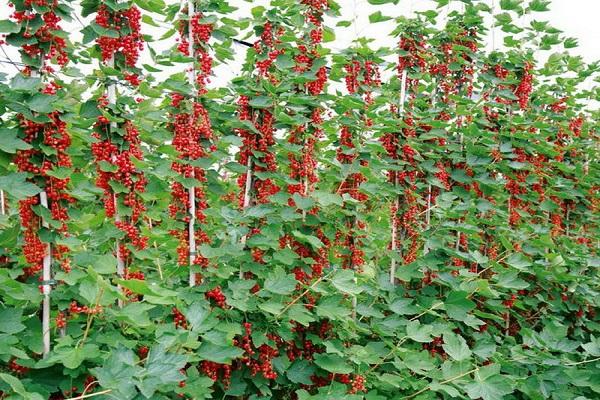
Formation of standard currant
When growing standard varieties of currants, several features must be taken into account. Including:
- bushes can be placed at a distance of about 30 cm from each other;
- cuttings with one bud at the top are suitable as seedlings;
- bushes can grow in one place and bear fruit for more than 15 years.
The formation of standard varieties consists in periodically cutting off excess stepchildren and pinching the tops. The lack of root shoots leads to a decrease in productivity.
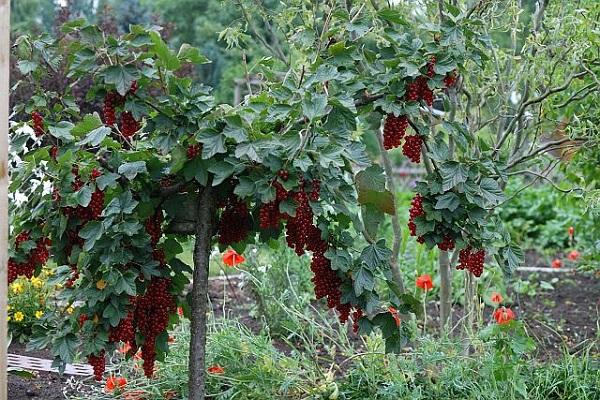
Preventive treatments for diseases and insects
To protect currant bushes from diseases and damage by harmful insects, preventive treatments are required. Spraying is carried out according to step-by-step instructions in several stages:
- after the snow melts, the fallen leaves are removed from under the bushes, the top layer of the soil is loosened and treated with copper sulfate;
- at the time of budding, the plantings are sprayed with Bordeaux liquid with a concentration of 3%;
- during the ripening of fruits and after picking berries, a 1% Bordeaux mixture is used.
Organic and chemical preparations help to save plantings from pest damage. Among the natural remedies for processing currants are common: soap solution, herbal preparations, infusion of tobacco, garlic or onion peels. If there are signs of insect damage on foliage and branches, it is advisable to use more powerful drugs, for example, a solution of colloidal sulfur, insecticides "Karbofos" and "Vofatox".
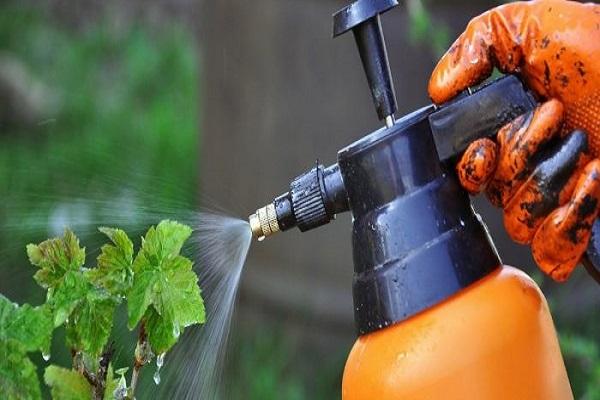
Wintering bushes
Despite the frost resistance of red currants, in regions with a cool climate, it is worth covering plants for the winter.Using a shelter allows you to create favorable conditions for the safety of plants at temperatures below -25 degrees. Agrofibre can be used as a material to protect plantings.
If severe frosts are expected, you can additionally use mineral wool. Material is wrapped around each branch separately.
It is also allowed to leave the bushes for the winter under a natural snow cover. For this, the branches are bent as close to the ground as possible so that in winter they are completely under the snow. Placing it next to the ground will help heat the branches and protect against blowing through.
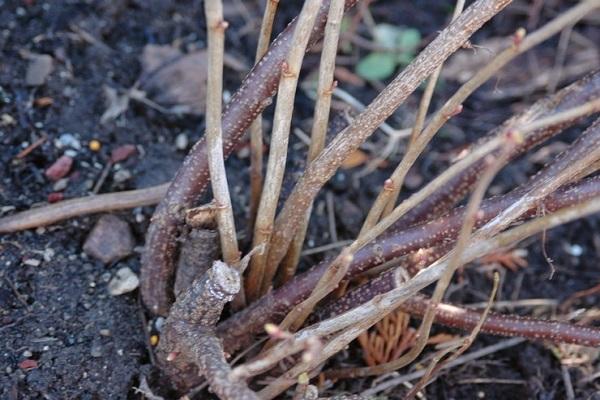
How to plant red currants
The process of planting currants allows you to gradually increase the number of shrubs on the site. During each season, new branches grow on the plants, which must be cut and planted in new places for rooting. If you do not plant currants, excessive thickening will adversely affect fruiting, size and taste of berries.
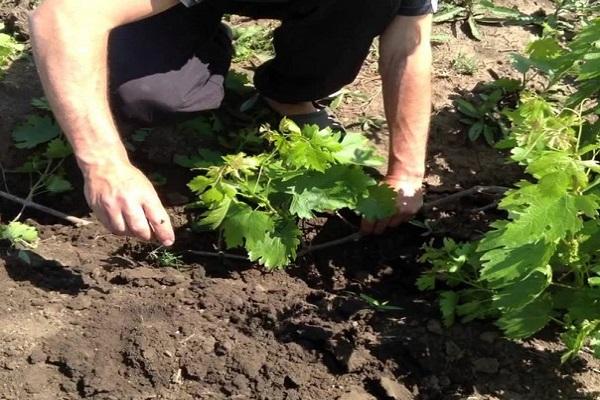
Red currant cultivation methods
Cultivation of red currants is carried out mainly vegetatively - by dividing the bush, layering or cuttings. The seed method is used in rare cases, since the berries do not inherit all the characteristics of the variety.
In order to prevent the spread of diseases as a result of the cultivation of currants, it is important to pay attention to the cultivation of healthy planting material. The preparation of cuttings and cuttings should be carried out from special mother plants. Place the mother seedlings in isolation from other plantings, including wild currants.
After the shrubs have multiplied, the rooted shoots are treated with routine maintenance, including watering, mulching, weed removal, and preventive protective sprays. In a few years, new plants begin to yield crops, and the old ones gradually lose productivity and must be dug up.
